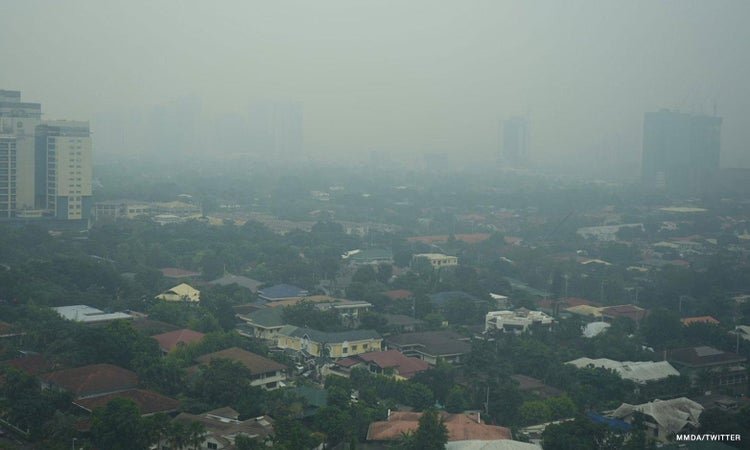Metro Manila (CNN Philippines, September 22) — Officials clarified on Friday that the haze blanketing Metro Manila and nearby areas is due to pollutants and a change in behavior of temperature and not related to the volcanic smog (vog) from Taal Volcano.
Department of Science and Technology (DOST) Secretary Renato Solidum Jr. said the smog in Metro Manila does not contain sulfur dioxide, unlike the vog caused by emissions from Taal, although he still cautioned the public to wear masks and avoid the outdoors.
“Dapat nating alalahanin na ‘yung nangyayari sa atin dito sa Kamaynilaan ay kakaiba sa Taal Volcano…dito sa Metro Manila ang source ng smoke ay ang pollution galing sa mga sasakyan at ang source po sa Taal ay volcanic gas,” Solidum said, warning of negative health effects from both.
[Translation: We must remember that what is happening here in Manila is different from the Taal Volcano… here in Metro Manila the source of smoke is pollution from vehicles and the source in Taal is volcanic gas.]
According to the Philippine Atmospheric, Geophysical and Astronomical Services Administration (PAGASA), the haze covering the capital region, Calabarzon, and some parts of Central Luzon are formation from small particles that come from smoke or pollutants “trapped close to the surface due to the presence of a thermal inversion, high humidity, and calm wind conditions.”
Thermal inversion refers to the abnormal condition in which air near the ground is cooler than the air above it.
“Nababara doon sa taas ‘yang mga pollution, pollutants, kaya nananatili lang sa lugar kaya masyadong hazy ang condition,” Solidum explained in a separate interview on CNN Philippines’ News Night.
[Translation: Pollutants are trapped in the same place, resulting in hazy conditions.]
He noted this is not the first time this happened in recent history. Rain over Metro Manila could help disperse the smog, the official added, although it could also cause acidic rain over areas with vog.
“Titignan natin bukas kung meron pang thermal inversion, kasi susukatin ito ng PAGASA,” Solidum said.
[Translation: We’ll check tomorrow if there is still thermal inversion, because PAGASA will measure this.]
Meanwhile, the Department of Environment and Natural Resources’ (DENR) Environmental Management Bureau reported that the air quality in Makati is “acutely unhealthy.”
The DENR tagged air quality in Pateros as “very unhealthy” and in Parañaque as “unhealthy for sensitive groups.” It said monitoring stations in some cities are offline or unavailable.
Vog not heading towards NCR
The Philippine Institute of Volcanology and Seismology (Phivolcs) also noted that the Taal vog is drifting west-southwest of the volcano, which means it is not heading towards Metro Manila.
Phivolcs has warned that vog is particularly harmful to individuals with asthma, lung disease, heart disease, and among the elderly, pregnant women, and children.
It maintained its warning to the public of health risks caused by the vog from Taal Volcano, which remains at low level unrest.
The agency reported 4,569 tons of sulfur dioxide emitted from the volcano in Batangas from 5 p.m. yesterday until 5 a.m. on Friday.
An advisory from the Civil Aviation Authority of the Philippines also asked flight operators “to avoid flying close to the volcano’s summit as airborne ash and ballistic fragments from sudden explosions may pose hazards to aircraft.”
Several cities in Metro Manila affected by the thick vog have announced class suspensions due to the low air quality.
SOURCE: https://www.cnnphilippines.com/news/2023/9/22/Phivolcs-Taal-Vog-updates-Friday.html


